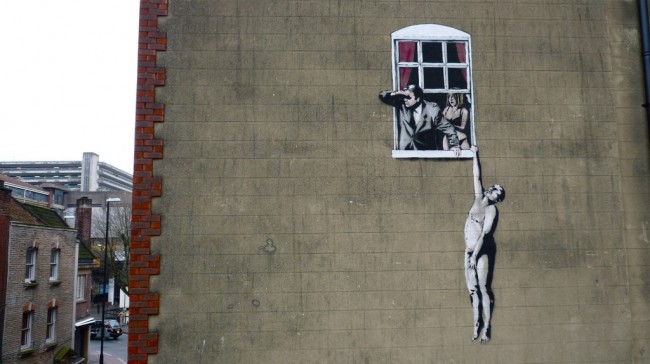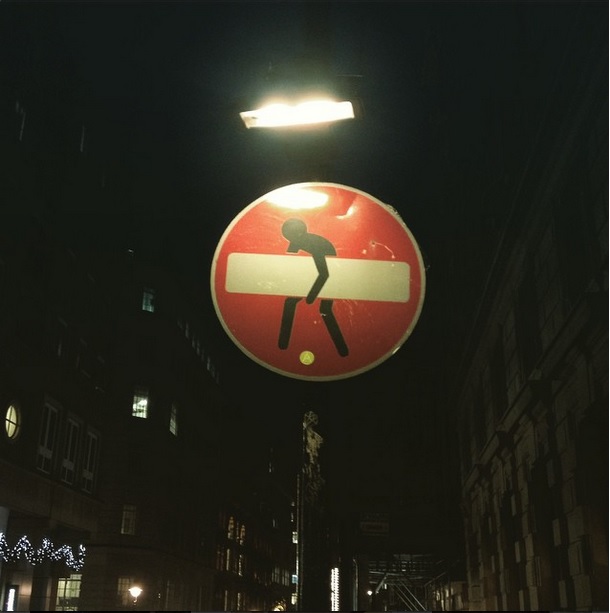Carrying out this blog has opened my eyes to the creative world we live in. For my final blog post I am utilizing my newly trained creative gaze to analyse a Guardian article that immediately caught my eye as a creative consultant: “Graffiti is ugly, stupid and threatening- there’s more creativity in crochet”. The article, written by Jonathon Jones, taps into one of the greatest debates within the creative industries, trying to establish what counts as art (McAuliffe, 2012)? This post will argue against the journalists hatred for graffiti through my own ideas on the way graffiti benefits us as a creative society. My blog post juxtaposing his article is a verbal manifestation of the debate between what is art and what isn’t.
In terms of my positionality, I love street art. Every time I go past a Banksy on the bus on the way to visit my girlfriend in Bristol I still get a flutter of excitement and can’t help but scramble to take a photo to upload to Instagram.
Thus, the way the article aggressively argues “The vast majority of graffiti is ugly, stupid and vaguely threatening. A tiny portion of it is witty or creative” I believe is not really thinking about the variety of graffiti on offer. Just like any art form, when you walk around a gallery you don’t love everything; some of it you much prefer and some isn’t to your taste. To say it’s “stupid” contradicts mine and Macdonald’s (2002) argument that although uninvited and illegal, graffiti is far from mindless – there is a point and purpose, even if the meanings and motives are often missing in the immediate picture.
This journalist also blindly ignores the politically charged meanings behind graffiti stating “scrawled and spray-painted inchoate messages on every corner of every city do not actually enrich our world”. To him they may be scribbles but to me, Graffiti is one of the most obvious visual manifestations of activism in the creative industries. It reflects a very bold and to the point texture of resistance which I think is essential to our free speech. In my opinion it is a spearhead of Craftivism which thrives on using creative enthusiasm to help bring about positive change through personalized activism (Greer cited in Anderson and Herr, 2007:401).
Finally, he clearly ignores that it is in fact a trend of our times with policy makers now taking notice and catering for our graffiti creative needs (McAuliffe and Iveson, 2011), with his view being “we have learned to put on a forced grin and tell ourselves it is the look of our time.”. The park in my village was presented with a ‘graffiti hut’ in 2010. Although it unfortunately became a place for underage drinking, anti social behavior and other vices, it did primarily flourish as a creative hub for the small rural graffiti scene.
I should perhaps end on a disclaimer: I do not promote you to go out and graffiti as such, but before you sub-miss it as “visual white noise”, consider the story, design and creative consequences of what you see.
Related Links:
References:
Anderson, G. L., and Herr, K. G. (2007) Encyclopedia of activism and social justice, London, SAGE
Macdonald, N. (2002) The Graffiti Subculture: Youth, Masculinity and Identity in London and New York, Palgrove Macmillan, NY
McAuliffe, C. (2012) Graffiti or street art? negotiating the moral geographies of the creative city, Journal of Urban Affairs, Vol.34, No.2, PP189-206
McAuliffe, C., and Iveson, K. (2011) Art and crime (and other things besides…): conceptualizing graffiti in the city, Geography Compass, Vol.5, No.3, PP128-143



